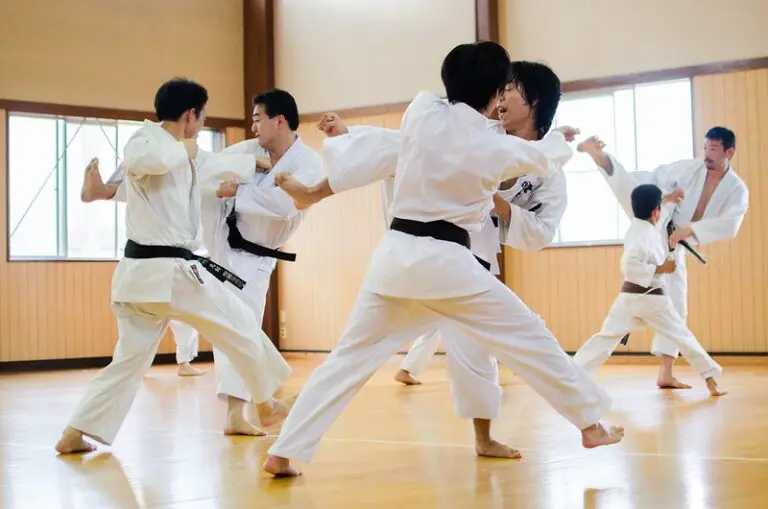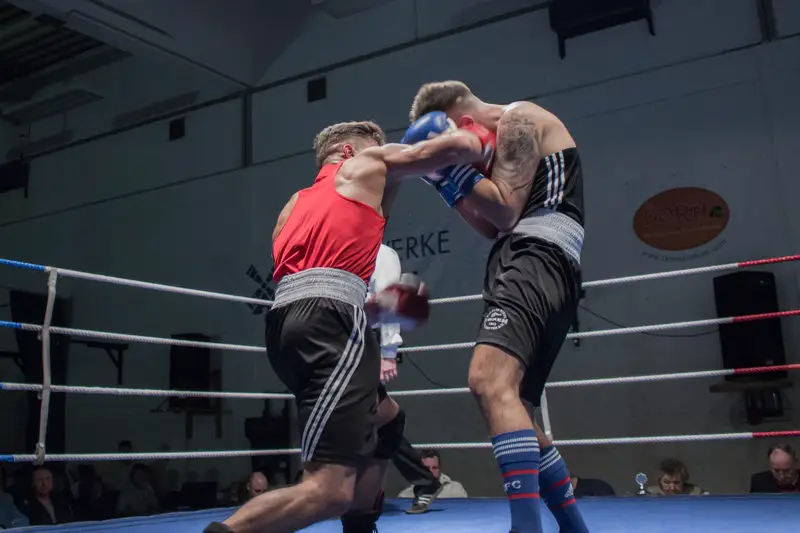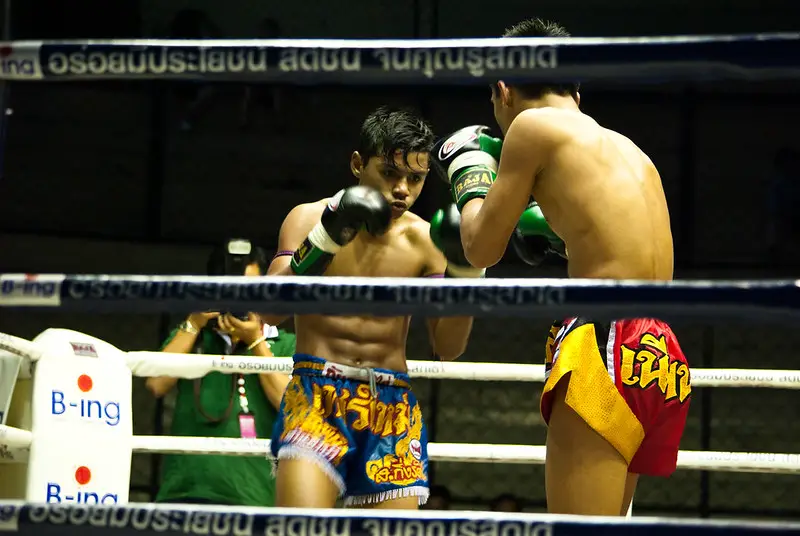Many people looking to enrol in karate training wonder how difficult it is to learn karate and what they may expect on their journey. So in this article, we are bringing you a comprehensive analysis of is karate hard to learn, what are the hardest styles, and how long it takes to progress through different levels.
Is Karate Hard To Learn?
Karate is relatively easy to learn as far as the basics are concerned. The learning program is not as physically hard or complex as in other martial arts. With proper instruction, most karate styles are easy to learn.
Of course, progress depends on many factors such as talent, dedication, and genetics. But overall, most people can pick up the basics in a reasonable time.
Reasons why Karate is hard to learn:
- Physical demands — Karate requires a high level of physical fitness. This involves strength, cardio, and being flexible. It takes time for a beginner to develop these skills and see any progress.
- Versatile skills: Karate involves learning a variety of techniques. It mainly focuses on striking with kicks and punches. But there are also blocks, footwork, throws, and strategies. Each technique requires precise form and timing, which can be difficult to master.
- Injuries — practice involves intense physical contact so the injuries are common. This is notably true for full-contact styles like Kyokushin.
Reasons why Karate is not hard to learn:
- Accessible to all ages: Karate can be learned by people of all ages, from young children to seniors. Many dojos offer classes adapted to different age groups and skill levels.
- Structured learning: training is designed with clear goals and milestones for students to achieve. This can make it easier for beginners to track their progress and stay motivated.
- Community support: dojos often have a strong sense of community. Each group operates as one big family, with fellow students providing support to each other. This can make the learning process more enjoyable and less intimidating.
How Long Does It Takes To Learn Karate?
It typically takes around six months to a year for a beginner to master the basics. Within the first year, students can expect to learn the core basics of Karate:
- Correct form
- Timing and distance management
- Footwork and movement
- Improved strength, fitness, and flexibility
Regular practice, both in class and at home, is essential for learning the basics quickly.
If your goal is to become a black belt, then you will need a bit more time. The time to earn a black belt in Karate can vary, but on average, it may take between four and five years of consistent practice. There are schools with lower criteria where you can do it in less time but you won’t be as skilled.
Here is a breakdown of the average time spent at each belt
- White Belt to Yellow Belt: 3 months
- Yellow Belt to Orange Belt: 6 months
- Orange Belt to Green Belt: 6 months
- Green Belt to Blue Belt: 9 months
- Blue Belt to Purple Belt: 9 months
- Purple Belt to Brown Belt: 9 months
- Brown Belt to Red Belt: 12 months
- Red Belt to Black Belt: 12 months
What Is The Hardest Karate Style?
Kyokushin Karate is often seen as the hardest style due to its emphasis on hard sparring and lack of gear. In training, students strike each other with kicks and punches without wearing gloves or shin pads. They only use mouth and groin guards.
They throw hard kicks both below and above the waist, including the head. Punches to the head are not allowed, but they can land on the body below the neck. The focus is on throwing each strike with full power and causing injuries to your opponent, or knocking them out.
As a result of this approach, the practice is hard on your body and the injury rate is quite high.
Though this makes Kyokushin effective in real life, it also causes its decline. Modern society sees it as too brutal and look for safer alternatives. As a result, most modern Kyokushin academies have started using gear to improve safety. Equipment like gloves and shin pads are becoming mandatory.
Some of the other hard karate styles are traditional ones such as:
- Shotokan
- Wado-ryu
- Shito-ryu
- Goju-ryu
Common Mistakes Karate Beginners Make
Here are the five most important common mistakes beginners make when learning Karate:
- Avoiding warm-up and cool-down — is a common mistake. These two aspects of training are essential to prepare and recover after the session. Neglecting these can lead to muscle strains, sprains, and other injuries.
- A bad stance — is a bad mistake because it all begins from it. Stance is the foundation of Karate, and an incorrect stance can lead to poor balance and bad form. Thus, focus on mastering the stances before moving to other techniques.
- Not practicing enough — consistent practice is essential to progress in Karate. Beginners who do not practice enough may struggle to remember techniques. They also tend to develop bad habits and fall behind in their training. Regular practice, both in class and at home, is necessary to develop muscle memory and improve technique.
- Skipping levels — never works in martial arts. You have to learn the basics to develop a strong base on top of which you can add more skills. Trying to fast-track your progress can only lead to bad habits and techniques. Sooner or later, it’s going to catch up on you.
- Not asking questions — asking questions is an essential part of learning Karate. Beginners who do not ask questions may miss important details. They may misunderstand techniques, and struggle to progress. Remember, the instructors are there to help and guide students. Thus, asking questions is an excellent way to clarify doubts and improve understanding.
By avoiding these common mistakes, karate beginners can progress more quickly and safely.
Can You Learn Karate At Home?
Yes, you can learn karate at home with the right gear and effort. This approach enables you to learn karate at your pace, intensity level, and comfort. However, you need to be aware of the limitations that come with learning karate alone.
Training without supervision allows you to pick up the basics. If you work hard enough, you may expect to develop proper form and improve conditioning. Online karate lessons, training videos, books, and solo drills are all valuable resources for learning karate at home. These resources can help you progress at your own pace and provide a solid foundation for your karate journey.
Yet, this is the most you can learn by yourself. More advanced stages require working with the coaches and training partners.
Here is a list of pros and cons of learning karate at home:
Pros of Learning Karate at Home:
- Comfort: Practice on your own schedule, anytime, anywhere.
- Cheaper: Avoid membership fees and travel expenses.
- Self-paced learning: Progress at your own speed.
Cons of Learning Karate at Home:
- Limited feedback: Harder to spot and fix errors without direct instructor supervision.
- Injury risk: Training without supervision can be more dangerous.
- Motivation difficulties: Harder to stay motivated without community support.
Karate Beginner Belt Ranking Explained
There are different belt systems in Karate, and the order and meaning of the belts can vary depending on the style and the dojo. However, here are the most common belt colors in Karate and their general meanings:
- White Belt: The white belt symbolizes the beginning of a person’s desire to learn. Beginners who are just starting wear this belt around the waist.
- Yellow Belt: The yellow belt symbolizes the first beams of sunlight that give a seedling new growth and new life. It is worn by a beginner who has learned to practice the basic moves of Karate.
- Orange Belt: The orange belt signifies the growing strength of the sun. Instructors give it to beginners once they master 10 self-defense moves. But this varies between the styles and dojos.
- Green Belt: The green belt represents growth. It is given to intermediate students who are learning to strengthen and refine their skills.
- Blue Belt: The blue belt represents the sky and the light it provides for all growing things. Coaches give to students who are slowly developing their signature style.
- Purple Belt: Indicates that the student is serious about acquiring new belts. It also shows that a student is ready to move into the advanced stages of study.
- Brown Belt: Represents the ripening of seed during the maturing and harvesting process. It signifies that a student has mastered the basics and is ready for further development.
It’s important to note that the meaning of the belts can vary depending on the style and the dojo. Therefore, it’s essential to check with your instructor or dojo to understand the specific belt system and its meaning.
Benefits of Learning Karate
Karate training comes with many physical and mental health benefits. Here are some of the benefits of learning Karate:
Physical fitness:
Karate is a full-body workout that improves strength, agility, speed, and endurance. It engages every muscle in the body, providing a total body workout. Students love it because it enables them to improve both upper and lower body strength evenly. It also heavily engages the core and improves balance, coordination, and range of motion. This minimizes the risks of injuries and all the pain that comes with aging.
Self-defense
Most karate styles teach practical self-defense techniques. Training is realistic and it prepares a student to apply these moves in real combat. In most styles, students also different tactics on how to avoid physical contact. This includes awareness, verbal tactics, and how to stay relaxed.
Improved mental health
Karate has a big impact on individuals’ mental health. Training strengthens the mind, develops composure, a clearer thought process, deeper insight into one’s mental capabilities, and more self-confidence. Apart from becoming a better martial artist, these skills transition to everyday life as well. It helps individuals maintain emotional control and make better and more rational decisions.
Improved social skills
Karate can also help you develop social skills. This is because of the team environment. You’re working alongside people with the same goals as you, learning and growing together. This is especially beneficial for children. In karate classes, they’ll be able to learn how to resolve conflicts, make new friends, and show compassion.
Goal setting and achieving
Karate encourages skill and the keen coordination of mind and body. Students are encouraged to set goals for their next grading and to establish plans for areas that need work. They are also encouraged to ask for help from their instructors along the way. This goal-setting skill is useful in many areas of our lives.
How Effective is Kyokushin Karate For Self-Defense?


